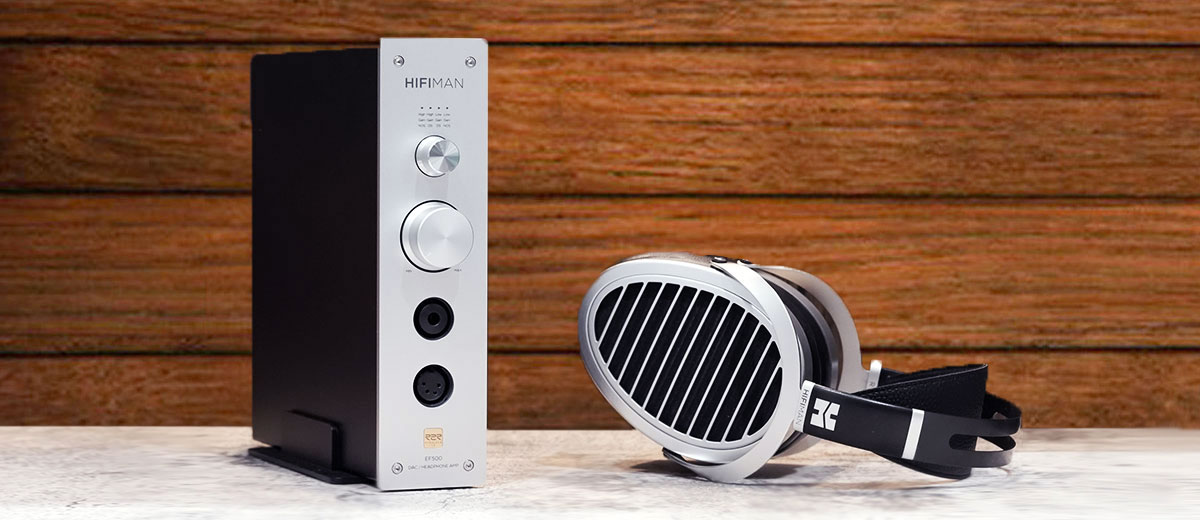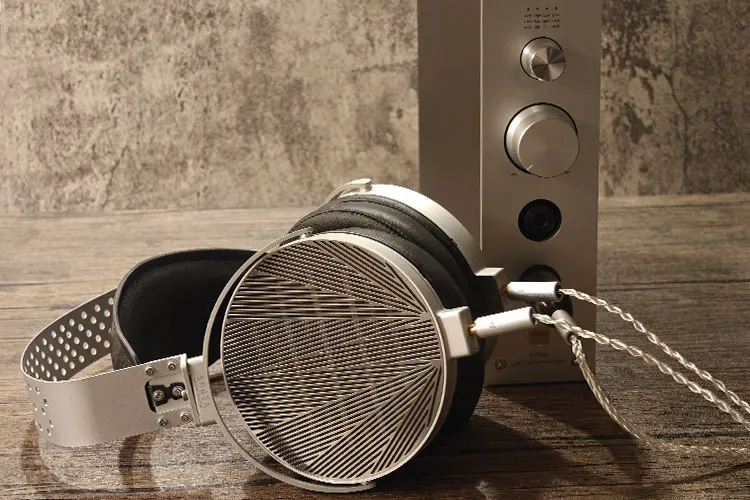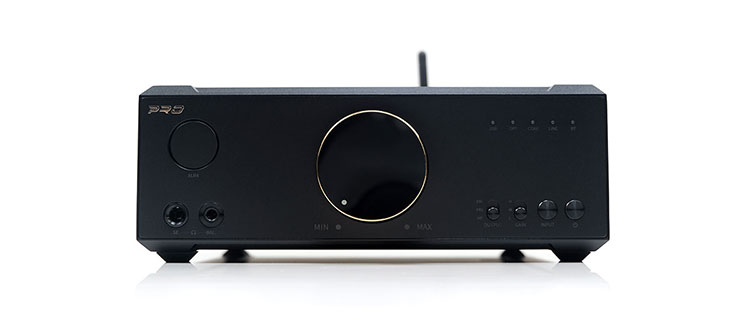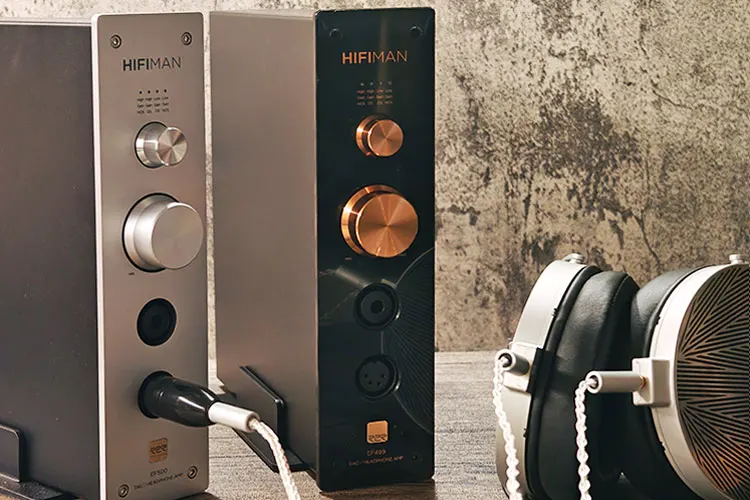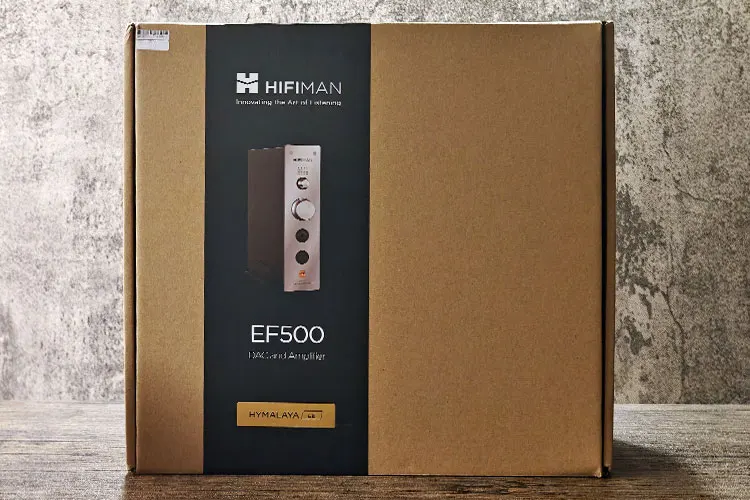Synergy
Efficiency
R2R chipsets are often associated with older technologies with more noise, but the EF500 is quite well-controlled, demonstrating sufficient technicalities simultaneously.
The background is also surprisingly quiet which helps enhance the dynamic range. On a higher gain you can hear some faint hiss with more sensitive headphones but when the music is on it is not detectable.
Power
With 4500mW on a 32Ω load, the EF500 is comparably more powerful than a handful of its competitors. It does pack a punch and you can hear the ample swinging power when a big drum hits or when a deep, powerful bass comes into play.
The power can drive the current demanding MOONDROP Venus to sound dynamic and powerful in the bass, while the FiiO FT5 is also very full-sounding, punching solidly in the lows. However, you may notice some channel imbalance with these headphones on lower volume levels.
Pairings
The EF500 is versatile for pairings given that there are OS and NOS modes built in that help it to suit different gears.
Paired with HIFIMAN’s own Ananda Nano, you get good dynamics and impressive clarity. The bass impact is fast and firm with clean decay while the mids are smoothly articulated with good density and well-defined vocal positioning.
Switching to the OS mode, I can pick up on a marginally stronger sense of clarity and power. The background is also very dark while strong dynamics are still presented.
Testing with the Moondrop PARA, it also sounds very open and dynamic, with the bass cleanly attacking and with rich bass details presented.
The vocal range sounds slightly bright but overall still controlled and well-defined. Generally, the EF500 tuning sounds livelier with headphones that have a neutral to slightly darker sound.
Due to the channel imbalance issue and the high output power, the EF500 is not an ideal pairing with sensitive IEMs. However, monitors with a higher impedance e.g. Westone Audio MACH 20 can enjoy the powerful output and still sound dynamic when paired with the EF500.
Select Comparisons
FiiO K9 Pro ESS
Technical
The K9 Pro ESS was FiiO’s flagship integrated DAC and amp before the K19 arrived. The design features dual ES9038PRO DACs and a fully balanced architecture with THX AAA788+ amping.
It comes with some advanced features, including App-based controls, a linear power supply, support for DSD256 and MQA support, as well as wireless LDAC Bluetooth connectivity.
From its balanced output, the K9 Pro ESS can deliver up to 2.1W power and reach a maximum swing of 52V, which is comparatively less powerful than the EF500.
However, the K9 Pro ESS achieves an excellent rating of ≥128dB for SNR and also maintains <0.00025% for THD+N, while the EF500 scores ≥117dB for SNR which is still decent.
Design
The K9 Pro ESS has a bold and distinctive design, in-built transformers, and a solid build. You can also put the K9 Pro ESS upright and use it as a headphone stand which is why it tempted me to compare it to the EF500.
In some ways, the two devices may feel similar when used as USB DACs. However, they are quite different when you look closer.
The K9 Pro ESS offers stronger connectivity such as Bluetooth reception with LDAC codec support and the ability to accept analog signals, effectively functioning as an amplifier and a balanced pre-amp.
On the other hand, the EF500’s XLR lineout outputs at full power are better suited for connecting to speakers with digital volume control or serving as a source for another amplifier.
It also offers a streaming feature that allows pushing music from your private cloud or over streaming apps when connected to your home network.
Performance
Using my Laptop as a USB-based source I compared the performance of the EF500 and K9 Pro ESS with streaming content and local high-resolution files.
Paired with the Moondrop Venus and PARA, the EF500 colors the midrange sounding fuller and more articulate compared to the K9 Pro ESS. It adds a dash more vibrancy compared to the more balanced and neutral-sounding K9 Pro ESS.
While the midrange is more prominent on the EF500 I would say it sounds just as open in the background as the K9 Pro ESS. However, the more neutral mids of the K9 Pro ESS allow for a stronger perception of extension at both ends of the spectrum.
The K9 Pro ESS also offers stronger transients and a greater sense of precision, as well as improved stereo imaging compared to the R2R-based EF500, with better treble extension.
The EF500 has less tonal contrast presenting a more organic and smoother tone with a stronger sense of density in the bass punch.
When switching to NOS mode, the EF500 sounds more resolving, although the K9 Pro ESS still maintains an advantage in resolving capability.
The K9 Pro ESS feels more IEMs friendly, with better noise control and preciseness in the output. Also, it starts at a lower volume, unlike the EF500 which has a higher gain level in the output. The EF500’s stronger output power is more beneficial for those users with more demanding headphones.
HIFIMAN EF499
Technical
The EF499 is like a twin brother of the EF500 and though it is also R2R it does not use the HYMALAYA chipset but rather a Philips R2R DAC.
It has a THD+N rating of 0.0008% and an S/N ratio of 99 dB, which is expected due to the older DAC chipset.
For output power, the EF499 can deliver up to 4.35W @32 ohm load on its balanced output, which is slightly weaker than the 4.5W on the EF500 but still has excellent levels of power to offer for most headphones.
Design
The EF499 has an identical design to the EF500 except for the more grandiose black-gold color theme. Mind you, I like the EF400 design, its color is more eye-catching and modern, unlike the more industrial and professional theme of the EF500.
Performance
While the output power rating and technology used are similar, there are very audible differences between the two decoders and amplifiers.
The clearest difference is resolving power, control, and extension on the EF500, as it presents nuances and micro detail more clearly with a more distinct vocal image rendered.
The EF500 is also cleaner, more accurate in the bass, and more precise in the treble. While the EF499 has a similar tuning focus which colors the mids smoothly, it does not capture as much texture and layering especially in the mid-range that is pushed more forward and fuller-sounding.
The treble also sounds brighter injecting more energy and tonal contrast to vocals and percussion more energy and penetration but can come off as slightly rawer sounding with vocal timbre.
The EF499 offers a softer overall sound profile and lacks the same level of refinement and detail retrieval power as the EF500. However, the EF499’s tuning remains euphonic and without feeling veiled or excessively thick.
For technical proficiency across all aspects while retaining the immersive mid colorings the EF500 is the better pick.
My Verdict
Overall, I find the EF500 to be a fun and practical headphone amplifier on the desk with an engaging signature and satisfactory technical performance.
It stands out from the competition with its organic-sounding R2R technology and powerful amplification section. The upright design, which also functions as a headphone stand when turned off, is very space-efficient, and the build quality is fantastic.
The bonus is the streaming functionality. This serves as a good starting point for those transitioning from Bluetooth connections to accessing their home private cloud library or simply streaming over Airplay for higher-quality playback.
HIFIMAN EF500 Technical Specifications
- THD+N (Line out): 0.0025% (-8dB)
- Channel Separation: 131土3dB
- Signal to Noise Ratio: 117dB (A-Weighted)
- Maximum Power Output: 4.5WPC@32Ω balanced /1.32 WPC@32Ω unbalanced
- Weight: ~3.37kg

